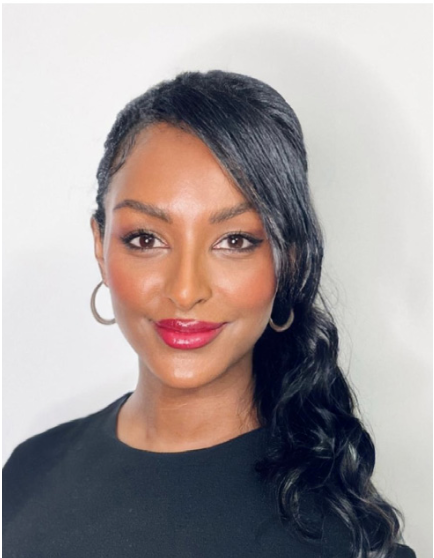|
ARTICLE Assess for Success: Consultation and Anatomy with Dr. Iman Nurlin |
|
Being able to reach out and connect with the patient isn’t always straightforward, even if you’re a skilled practitioner. We asked Dr. Iman Nurlin to explain the consultation process, to transform a “nay” into a “yay” when setting up a treatment plan. “A successful assessment involves a thorough evaluation of the patient’s needs and how you as a practitioner can achieve that desired outcome. It’s about understanding both the patient’s external wants and internal needs. It relies on clear communication and creating a thoughtful treatment plan together,” Dr. Nurlin explains. She describes how a holistic perspective is crucial to build the patient’s trust: “I like to call it a treatment journey, and we must aim to create a journey that considers both the physical and internal aspects. To succeed, we must convey our expertise effectively and develop a well-thought-out plan that the patient is on board with. It’s a delicate balance between being a skilled practitioner and an effective communicator.” “You can be a great practitioner, but if you can’t convey your vision and build that trust, then I’m sorry – you won’t be doing that treatment.” |
|
What are your 3 tips for creating a successful treatment plan for a new patient? ”First, take the time to actively listen to the patient, especially during the initial meeting. Read between the lines – consider whether the patient seeks quick results or is more cautious or anxious. Assess whether the expectations are realistic and take their financial situation into account,” Dr. Nurlin says. She adds, “But also be aware of your own knowledge and limitations. Don’t treat beyond your capabilities – don’t promise results you can’t deliver or treat areas where you lack confidence.” About the last tip, Dr. Nurlin goes back to the patient. “Adapt to his or her pace. While I tend to be cautious, I’ve found that some patients prefer quicker results, for instance. Balance safety with responsiveness, and tailor the treatment journey to the individual needs.” But what about the long-term plan, are there any inside tips Dr. Nurlin wishes to share? Oh, it depends on the patient’s specific needs and goals. For some patients, it’s straightforward – like those who only want lip enhancements and there’s nothing else really to it. In these cases, we might schedule follow-up appointments every six months for maintenance.” However, for patients with more comprehensive needs, such as addressing facial lines or volume loss, the treatment plan becomes more complex. “I always start by asking how quickly the patient wants to see results. This timeline significantly influences our approach. For instance, if a patient wants noticeable changes quickly, say within three to six months, we might schedule treatments once a month. Each session would focus on different areas or concerns, building towards the overall desired outcome. After achieving the initial results, we’d switch to maintenance treatments,” Dr. Nurlin explains. “Provide a clear picture of expenses. We need to be realistic.” But there’s always the need for a budget to back the plan up. Dr. Nurlin stresses how important it is to create a plan that’s not only effective but also financially realistic, and opting for alternatives when needed. This might mean spacing out treatments or prioritizing certain procedures. “Ultimately, the key is flexibility and communication. We start with a structured plan, but I always reassess at each appointment. This allows us to adjust our approach based on the patient’s response to treatments and any evolving preferences or needs they may have.” What do you do when the patient wants something you wouldn’t recommend? “This is much more common than one might think! Many patients come with a specific request, but as trained aesthetic practitioners, we often see the bigger picture. For instance, if someone wants to enhance their lips to appear happier, I might also notice that addressing frown lines or other issues could better achieve their desired outcome. Putting it shortly, it’s essential to listen to their motivations, empathize with their wishes, and then use your expertise and experience to propose a solution that may be more effective.” “It’s impossible to create an effective treatment plan without physically examining the patient’s facial structure.” The Importance of Anatomy
Dr. Nurlin continues by addressing another key aspect. “Having a solid grasp of facial anatomy is crucial in our field. I’ve found that the best way to acquire this knowledge is through a combination of hands-on experience and structured learning. Personally, I’ve learned the most from cadaver courses and specialized anatomy lectures, and using advanced anatomy apps that show different facial layers is also a good tool.” |
Wish to explore the anatomy landscape? Allergan offers many valuable tools and online courses, including the AMI Anatomy app, so let’s embark on this journey together! |
Dr. Nurlin’s 6 Essential Consultation Steps:Laws and regulations: Firstly, you need to follow your country’s legislation. I practice medicine in Sweden and according to Swedish law the patient must be provided information about the procedure, pricing, potential side effects, risks, and outcomes, for instance. Make sure you are aware of all the applicable regulations in your geographic location. Introduction: I believe it’s critical that you start by introducing yourself, your clinic and what you stand for. The patient should know and understand your experience. Medical Assessment: Gather relevant medical information to understand any existing conditions that might impact treatment decisions. Some conditions do affect our treatments! Physical Evaluation: Physically assess the patient. Consider skin quality, volume, and elasticity etcetera. Financial Transparency: Discuss costs openly. Provide a clear picture of expenses, including follow-up visits. We need to be realistic. Address Concerns: Allow time for questions and concerns. A thorough consultation leaves patients feeling informed and confident. |
We are here to support |
|
|
|







